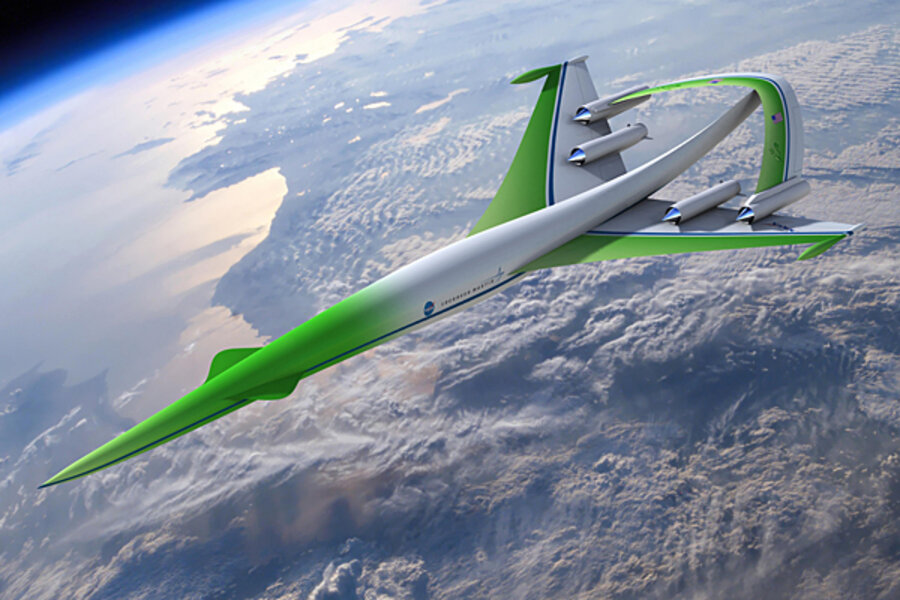New supersonic plane could hush sonic booms
Loading...
A new design concept for a futuristic faster-than-sound aircraft could break through legal barriers to supersonic flights over land by shushing the sonic booms created by such vehicles.
The concept aircraft, envisioned by aerospace company Lockheed Martin, would revolutionize supersonic cruising by relying upon a so-called "inverted-V" engine-under wing configuration, where the engines sit atop the wings rather than beneath, NASA officials said in a statement.
A Lockheed illustration of the supersonic concept released by NASA is just one of several designs presented in April to the space agency's Aeronautics Research Mission Directorate following a call for studies on advanced aircraft that could take to the skies sometime around 2030 or 2035.
NASA also has high hopes for air-breathing scramjet technology that could efficiently propel vehicles at hypersonic speeds and potentially help boost future space planes into Earth orbit. [Air Force's plans for hypersonic weapons.]
The United States and other nations previously banned overland supersonic flights because of their classic sonic boom and rattle effect that can ruin anyone's morning cup of coffee.
That prevented the now-defunct Concorde airliner from going supersonic except over water during transatlantic trips. Since then, NASA has performed several studies with supersonic flights aimed at shushing supersonic booms.
Such considerations also matter for ongoing hypersonic tests. DARPA tested its HTV-2 hypersonic glider prototype off the southern coast of California in late April, but lost contact with the vehicle early on during the flight.
The U.S. Air Force used the same Pacific corridor when it achieved the longest hypersonic flight in May with its X-51A Waverider. But the X-51A has yet to break the hypersonic speed record of NASA's X-43A project, which achieved Mach 9.6 in November 2004.





